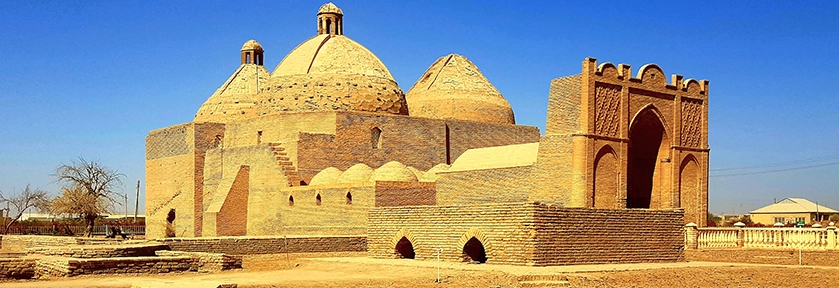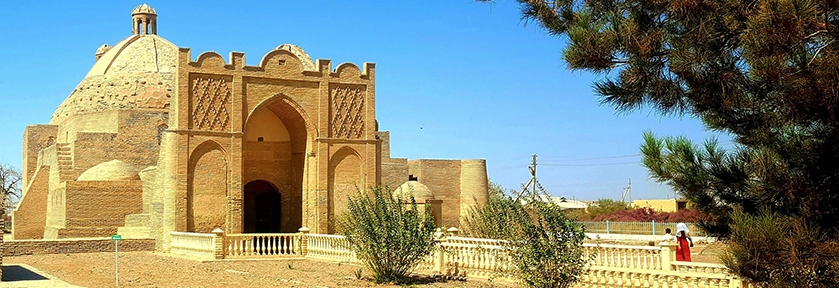Astana-Baba - an intriguing place located just a few kilometers from the Amu Darya River in Kerki. This small modern village holds a mysterious heritage that dates back to ancient times, revealing fascinating archaeological and historical puzzles.
At the beginning of the last century, this area was inhabited by the versatile Turkmen craftsmen and artisans known as the Ersary people. They were not only involved in farming and silk production but also excelled in boat crafting for fishermen. Furthermore, their skills extended to wood carving, pottery, blacksmithing, and weapon-making. Their abilities and expertise were remarkable.
The History of Astana-Baba
The history of Astana-Baba unfolds thanks to the efforts of Russian orientalist Boris Litvinov, who, in 1899, became the first European to visit this place for scientific research. Litvinov compiled detailed descriptions of monuments and gathered legends associated with this remarkable location, marking the beginning of a great story.
Ancient Heritage of Astana-Baba
Academician Mikhail Masson continued the research and expanded our knowledge of the area's past. Through discoveries of coins, ceramic fragments, and rare written sources, Masson established that Astana-Baba was inhabited over two thousand years ago. He also determined that the city of Kerki (now Atamyrat) corresponds to the medieval city of Zemm, mentioned in the 7th century in connection with Arab invasions in Central Asia. Near Zemm, there was the town of Maimarg, the precursor to modern Astana-Baba. Archaeologist Viktor Pilipko conducted extensive excavations of the ancient citadel known as Omar-Kala, leading to the discovery of a terracotta goddess figurine adorned with cult attributes. This finding testifies to the richness of culture and art, that flourished in this region in ancient times.
The Alamberdar Mausoleum: A Gem of Medieval Architecture
However, the crown jewel of Astana-Baba is the Alamberdar Mausoleum. According to historical records, it was built in the late 10th to 11th centuries. It is believed to be the final resting place of Ismail al-Muntasir, the last representative of the Samanid dynasty, who was assassinated in 1005. Sultan Mahmud of Ghazni, an ally of al-Muntasir in the fight against the Karakhanids, sought to immortalize the memory of the great commander by constructing the mausoleum in Maimarg. The Alamberdar Mausoleum astounds with its refined architecture, typical of the 11th and 12th centuries. Its grand dimensions, ornamental brickwork using decorative carved bricks, and majestic entrance portal all attest to the skill and taste of ancient builders.
The Legend of Alamberdar
Local legends tell the story of Alamberdar, who served under Caliph Ali. He went in search of water for his squad, leaving a campfire to find his way back. Upon his return, he mistakenly approached the enemy's campfires and was killed. His companions retrieved his body, buried him, and erected the mausoleum over his grave. Although the mausoleum is not a typical pilgrimage site like those of saints, it continues to inspire and captivate researchers and tourists alike.
A Journey Through Time
Astana-Baba is more than just a spot on the map. It is a journey through time and an exploration of a rich cultural heritage. Here, you can uncover the secrets of the past and witness the grandeur of ancient civilizations. This is a place where history comes to life, and every stone has its own story to tell.


